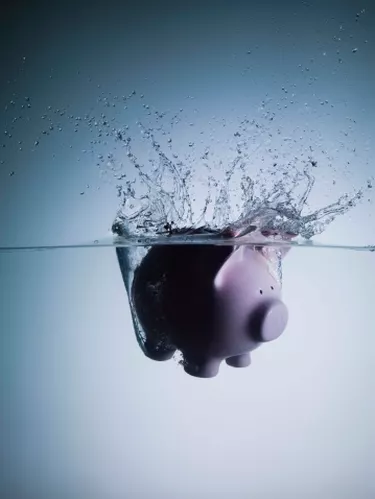
Cash kiting, or check kiting, is a method of fraud in which an individual may artificially inflate the balance on a bank account by writing checks and taking advantage of bank floats. Costing banks billions of dollars in lost revenue, the act has been practiced since the 18th century and still occurs today. However, modern banking techniques have made the practice more difficult in recent times.
Cash Kiting
Video of the Day
Cash kiting is the act of taking advantage of bank floats in order to commit fraud. A fraudster uses two bank accounts in separate banks: bank account A and bank account B. These bank accounts may or may not be his own. He then writes a check from account A that is more than the available balance in that account. Another check is written, this time from account B, which also has insufficient funds.
Video of the Day
The fraudster takes advantage of bank floats, which is the delay in processing time between two banks. During a float, the balance of bank account A appears as if a check has not been written, and the balance of account B appears as if the check has cleared. Thus, during cash kiting, both accounts appear to have a greater amount of funds than is actually the case. Fraudster can thus make a profit by taking advantage of a bank's float rules.
History of Cash Kiting
Banks have lost billions of dollars as a result of cash kiting. The act has been practiced since the late 1700s, when the communications between banks were not as well developed. At the time, the float times could be as high as a few weeks. During this time, cash kiting was often done to cover bills or rent on a short notice, with the knowledge that bank balances would be settled in the short term. The practice of cash kiting has extended to the present day; however, it is now often a device used by fraudsters to scam others of their bank balances.
Signals of Cash Kiting
Banks look for variety of signals that may point to possible cash kiting. Banks tend to suspect evidence of cash kiting when there are a large number of deposits in one day, with a high percentage of such deposits coming from a single account. Other signals may include when a bank account may have more money taken out than the amount of checks in float, when overdrafts are covered by checks and not cash, and frequent ATM usage for deposits.
Consequences of Cash Kiting
Historically, it has been difficult to prosecute cash kiters. This changed in 1990 with an amendment of Title 18 of the United States Code. This amendment made it illegal for individuals to obtain funds under false pretenses. Furthermore, with the increasing use of computer technology, there is less of a need for a human eye to track evidence in cash kiting, as mathematical algorithms can usually detect the signals automatically. The Check 21 act, which reduces bank floats by means of increased transaction speed, has also made check kiting more difficult to carry out.